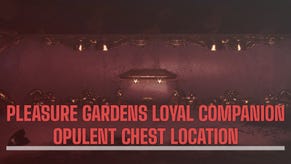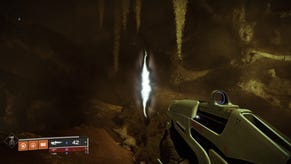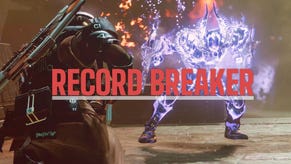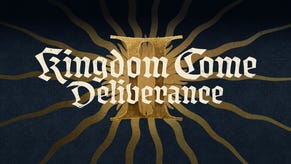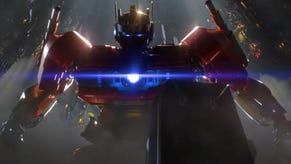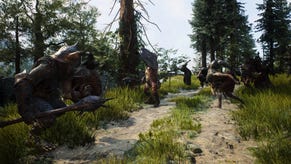Destiny: State of the Game part two - growing and changing
The journey of Destiny didn't end at launch. Bungie's shared worlds shooter had a lot of growing up to do.
Destiny wasn't the first game to combine shooting with a heavy dose of MMO elements, but it was the first to do so with the $500 million backing of a major triple-A publisher and the scrutiny of almost the entire games industry. In this second episode of a three part series, published as part of our Week of Destiny, we reflect on the shooter's growing pains and evolutions.
Within one week of launch, Destiny proved to be the subject of much aggravation. Its stripped-back user interface, relative lack of handholding and absence of documentation left many a player bemused and annoyed when they hit the soft level cap of 20 and had no idea how to progress further.
Guide writers benefited greatly from this obfuscation (thanks, Bungie), as well as from other questions like "how do I get into PvP" and "how do I change the difficulty settings". Flourishing player communities sprung up to sort out the game's many mysteries and support each other, and by the end of Destiny's first week, most of the game's secrets had been cracked.
There was still one major mystery hanging over us, though; Raids. Bungie kept the game's first Raid, Vault of Glass, behind locked doors, only allowing Guardians in when it judged they'd had enough time to achieve level 26, the minimum it believed would be required to survive the many hazards contained therein.
Nowadays both available Raids have been explored so thoroughly that strong crews can skip gaily through Crota's End, nominally the harder of the two, in half an hour, but at launch, the Raids presented towering difficulty strikes and baffling mechanics (I remember my first attempt took six hours, and only got us two thirds of the way through - and that was with a guide). Still, the community took the challenge seriously and managed to knock the Vault of Glass over within 14 hours of going live.
The introduction of Raids changed the way end-game players approached their commitment to Destiny. Suddenly the race was on to hit the hard level cap of 30, attained by first gathering all the necessary gear from Raid drops and then enough upgrade materials to max it out. Running Vault of Glass each week - and later, Crota's End, and Hard Mode of both raids - is the heart of many Guardians' schedule, even after they've hit the hard level cap; after all, there are always Exotic and top-tier Legendary weapons to collect, upgrade, and unleash in the Crucible, as well as new records to set - how about three-player team. Two-player team. Solo. Solo hard mode. Speed records. No weapons. Solo with no weapons.
Raids haven't been uncontroversial; even today debates rage over Bungie's decision not to implement matchmaking, although anybody who's played with a random pick up group will tell you that having a pre-formed crew is practically a necessity. There are now multiple community tools designed to bring serious Guardians together, helping you weed out hardcore Raiders who just don't have buddies on the same schedule from those casual players who can't find their arse with both hands and a maxed-out Icebreaker. It has also, unfortunately, bred an unpleasant streak of elitism amongst those who insist that certain weapons, classes and experience levels are required to defeat various challenges. (Trust me: they're not. Communication, teamwork and good leadership are all you need - besides the ability to press all the right buttons.)
Far more controversial than the absence of Raid matchmaking, but just as stubbornly persistent a feature of Destiny, is its loot system. Despite constant outcry against it, Bungie has made only the mildest of changes to its random number generator-based rewards scheme since launch, notably making Raids a little less likely to break your heart. The system is such a constant talking point that it has itself almost become a character, hailed with cries of "Praise RNGEsus!" when it finally chucks a Gjallahorn your way.
Eventually, player frustration in random loot drops in conjunction with loot-based progression resulted in a phenomenon known as the Loot Cave. Taking advantage of a spawn quirk, groups of players would stand in place for hours on end, leaving only to gather ammo, while firing at waves of enemies rushing through a choke point. When ready, they'd dip into the scene of the carnage and gather whatever Engrams had dropped.
Despite the fact that the Loot Cave was a less lucrative source of Engrams than almost any other activity, it somehow felt better to some players, who were apparently less bored by standing totally still than repeating half a dozen Strike missions, for example (weirdoes). Although Bungie said that this wasn't how it intended Destiny to be played, some players liked coming together in groups in this way. Unfortunately, griefers deliberately blocking Loot Cave spawns became such a problem that Bungie eventually had to shut the cave down due to the volume of complaints it was receiving, leaving a cute little nod to the practice on site.
Next: Small changes to the loot system, special events, major leaks and lighthearted fun.
Bungie doesn't seem inclined to change the randomness of the loot drop system, which in its various manifestations admirably maintains some variation in equipment and therefore play style among end-game players - but it did relax things a little. Patch 1.0.2 upped your chances of scoring a Legendary item, ensured Engram level indicated the lowest possible level of item inside, and added Rare and Legendary engrams to reward tables on high-level activities. Despite these changes, the Cryptarch has maintained his reputation as a troll and a cheat; nobody likes to see a Legendary engram resolve into a Mote of Light, for example.
Other early changes to Destiny include a major increase in the frequency of Public Events (now easily tracked through community tools), difficulty tuning, fixes to cheese strategies in the Vault of Glass, controversial Raid tuning, and more.
As well as these system changes, Bungie began to introduce time-limited events. The first of these was a PvE-focused affair called the Queen's Wrath. While popular, it had its issues; players soon began exploiting its daily missions for Legendary loot, dismantling them for Ascendent Shards and Energy, which were otherwise quite difficult for lower-level players to obtain. When the event ended, Bungie put it back into the oven - it will return in expanded form as a permanent game feature in House of Wolves.
Shortly afterward, Bungie kicked off the Iron Banner, a PvP event. This one has proved to be a winner, sticking around to drive players into the Crucible on the regular. Again, it had some teething issues; initially, the claim that "power matters" felt pretty hollow. Bungie made big changes to the formula, and the event is now considered a highlight.
In lighter matters, players were having a great time finding new ways to enjoy the game. It felt like every week bought a new craze - sparrow tricks, sparrow surfing, jumping the hellmouth, flying Bladedancers, 3D printing. Bungie had some fun too, dropping a little Halloween gift in player's post boxes (we got one at Christmas, too, and Bungie produced a nice little Easter Egg at the appropriate time) and handing over an über-rare weapon to a player using Destiny as a form of physical therapy.
Even as all this was going down bugs, data sniffers and inside sources began to leak upcoming content. Every patch, hotfix and server update is analysed and made to yield its secrets, internal events have resulted in sneak previews, and the general shape of the content so discovered has been been proven largely correct over time. Several excellent fan databases, maintained by users but pulling data directly from Destiny's servers, catalogue new content for weeks or even months before it releases. This is a problem Bungie has been unable to shake; the eagle-eyed have had foreknowledge of pretty much every major announcement dating right back to launch month. (Heck, at least four different not-that-inaccessible secret areas have been found in the game itself by exploiting various glitches. A couple of these turned up in The Dark Below, most recognisably as part of the Siege of the Warmind mission.)
Luckily, we didn't have to wait long for official news. In December, Bungie lifted the lid on The Dark Below, Destiny's first expansion. (A week later, Activision announced that yes, a sequel was in the works, too.)
Patch 1.03 prepared the game to receive Crota, Omnigul and Eris Morn, inevitably leaking some of its content as well as accidentally breaking a couple of favourite weapons with a bit of Exotic tuning. However, it also stealthily introduced a graphics upgrade on new-gen, overhauled some UI elements, added new audio and adjusted Strike difficulty scaling to favour full fireteams. (It's no wonder people want to data-mine when Bungie is so coy about its activities.)
It wasn't long before players who'd pre-purchased The Dark Below via the Season Pass or special editions received a little bonus to take their minds off it: the Tumbler sparrow, which was specifically designed for tricks. This sparrow remains a popular choice today.
Next: The Dark Below and a pair of very welcome patches shake up Destiny's systems.
The next patch, update 1.1, made a number of subtle but important changes. Exotics were rejigged to fix issues introduced in the last patch, of course, but the Exotic shard was introduced. Sold by Xur, Destiny's weekend-only vendor, or found by dismantling duplicate Exotics, these became a required element of maxxing out Destiny's best weapons and armour. The economy got a bit of a boost with Destination materials added to the rewards for the Daily Heroic and certain Bounties, and players were given the option to buy rather than sell Destination materials to Vanguard and Crucible vendors. Finally, the Cryptarch became more generous in his reward packages, if stingier with reputation points, and the Factions stopped "rewarding" you with class items you already owned, instead very rarely handing out emblems and shaders.
When The Dark Below hit, it brought a surge of players back to the game - along with a new Public Event, the Blades of Crota, which has since been retired. In addition to exclusive new story missions, quests, Strikes and a Raid, the expansion added a number of features accessible to all players - not just those who bought in.
One of the most important of these was the ability to ascend Exotic equipment through Xur. The Dark Below raised Destiny's level cap from 30 to 32, making hard-won Exotics obsolete. Bungie's solution was to allow players to ascend a random selection of Exotics each week, provided they had a spare Exotic shard to spend. This was welcome, but ultimately proved a little frustrating; ascending a weapon or piece of armour reset its progress, meaning you'd have to earn all that XP, as well as spend all the glimmer and upgrade materials, again. Bungie vowed it would do better in House of Wolves.
Players who didn't own the expansion could also visit Eris and complete bounties for her, earning XP and reputation, which would be useful should they eventually buy in. What they couldn't do is run the Daily and Weekly challenges, which for several weeks after The Dark Below's March launch threw up expansion content in high rotation. This is something Bungie wants to avoid with House of Wolves; by uncoupling the Weekly Heroic and Nightfall, it wants to ensure there's always something for vanilla players to enjoy.
The new Raid proved pretty popular, although definitely shorter; Crota's End was achieved in just six hours, and Hard Mode went down fast, too. Bungie has continued to tinker with it, closing loopholes and cheese strategies, although some bugs still persist - as they do in Vault of Glass.
One of The Dark Below's new arrivals proved to be deeply unpopular, but hung around forever anyway - the notorious heavy ammo bug. Heavy ammo is in short supply in Destiny, and is especially necessary in Crota's End. The bug, which was linked to numerous pieces of equipment including that used for the Raid itself, meant players were constantly running out of this precious resource.
In the wake of The Dark Below, and with the next expansion expected within a few months, Bungie could have been forgiven for quietly cooling its heels. Instead, it continued to update Destiny quite actively - which bodes well for the future. For starters, it introduced two new PvP modes, Doubles and Inferno, which brought a very welcome breath of fresh air to the somewhat-neglected Crucible.
The developer also issued two major patches. Patch 1.1.1 brought sweeping changes to weapon balance, especially to fusion rifles, auto rifles, hand cannons and shotguns. It also introduced much-requested UI features such as Faction reputation levels.
Although it didn't advertise the change, once of Bungie's most applauded 1.1.1. changes was an update to the companion app, allowing Guardians to retrieve items from their vaults and even swap items between characters from their smartphones and tablets, with no need to visit the Tower or switch characters.
If Bungie had left it at that we'd have been quite content, but it soon followed with the even larger patch 1.1.2, which squashed yet more raid bugs, expanded vault space, adjusted ammo drops in PvP; rebalanced Strikes; enabled the option to wear helmets in social spaces; and added accessibility UI options. Less seriously, it added a jukebox to the Tower; it also very quietly removed the Blades of Crota.
In the seven months since launch, Destiny had changed and evolved to a remarkably upbeat schedule. Bungie's hard work was rewarded; although Activision Blizzard doesn't like to talk specific numbers, it has said that Destiny and Hearthstone have earned a combined $1 billion in revenue life to date. 50 million players have registered, and the average player still puts in three hours a day. Also, Destiny took out the Bafta Game of the Year Award, scored big at the DICE Awards and got a technology nod at the GDC Awards.
Is it time to sit back and relax? No. Players still have a list of requests they want addressed. Bungie always looking for way to balance gameplay. And Guardians are voracious for new content and challenges - not to mention sweet, sweet loot.
Join us tomorrow as we continue our Week of Destiny coverage by taking a look at how Destiny is set to change - again - with the release of House of Wolves - and where it's likely to go in the future.




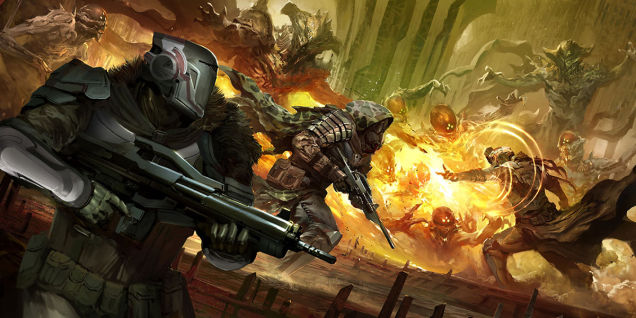







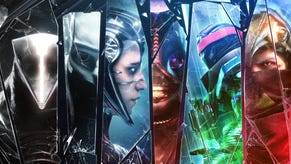


.jpg?width=291&height=164&fit=crop&quality=80&format=jpg&auto=webp)
